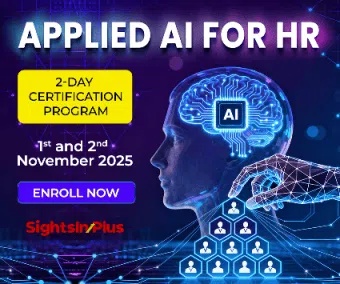How to Use Data Analytics to Meet Your Diversity, Equity, and Inclusion Goals
Diversity can be described as the “presence of difference”. This can be across demographics, cultural origins, skills, abilities, ideas, philosophies, beliefs, experiences, and perspectives. Equity involves looking at initiatives where opportunities may or may not be consistent and fair. This can be characterized by inequities in pay, promotions, opportunities to develop, lead, etc. It also means identifying who holds the decision-making power – and whether that’s representative of the company’s cultural values, community, customers, and vision. Inclusion is about “accepting those differences” i.e. the deliberate steps aimed at creating a workplace culture where all differences are welcomed, leveraged, and appreciated for their unique contributions.
Today, you’d be hard-pressed to find an organization that doesn’t talk about Diversity, Equity, and Inclusion (DE&I) as a business priority, value, differentiator, or focused area for improvement. Investments in DE&I have a well-researched relationship to business performance and increased profits.
“McKinsey research shows diverse organisations outperform competitors by 35% and decision making by diverse teams delivers better outcomes than that of individuals 87% of the time.”
According to recent research from McKinsey, companies that improve their DE&I initiatives now will be better positioned for growth and renewal post-COVID-19. DE&I are more than buzzwords or corporate values to aspire to.
It is clear from everything we have seen so far and what we continue to learn today – problems with DE&I are often systemic in nature. They cannot be solved by one-off programs and policies. Organizations need a comprehensive approach that looks at DE&I across the organization (and society) as a whole. HR may lead the effort, but this is an organization-wide undertaking.
When done right, the analysis and disclosure of DE&I data holds the promise of being a powerful lever to change behaviour and encourage progress. A few years back several global organisations, especially in the Tech industry, started releasing annual diversity reports detailing their workforce composition. This initiative was welcomed as a win for transparency and as a sign for more progress to come on diversifying the industries.
However, data disclosure alone is not enough to spur meaningful change. Organizations looking to make the best use of their DE&I data must:
Present it in a way that’s simple, specific, and comparable
Information needs to be legible to the intended audience to effect change. Companies may have all the right data points at their fingertips but little clarity about what the data ‘means’. Employee information sitting passively in one or more HR databases does not result in actionable DE&I insights. Company-wide metrics may mean nothing to a manager trying to decide whom to hire or promote.
Use it to empower the right people to act
In most organizations, DE&I data is collected and tracked by HR or D&I Analytics teams, which is far from the front line. This makes data less accessible to the average employee and reduces employees’ sense of ownership over the DE&I responsibility. In order to use data as a driver of DE&I progress, organizations should establish connections between manager’s daily decisions and the resulting DE&I outcomes. The key actions shaping an organization’s workforce composition are external hiring, lateral hiring, promotion, and turnover/retention. DE&I metrics around each of these processes should be broken down and tracked by division, level, geography, and manager — and gradually.
Use it to set goals that create accountability and improve follow-through
Data is useful to highlight a problem and garner attention. Paraphrasing Peter Drucker, “if you don’t measure it, you can’t manage it.” But sometimes the numbers alone don’t garner the will to change DE&I-relevant behaviours. Goals serve as more potent catalysts to achieve behaviour change as they mobilize the will (motivation) and the way (effort, strategies) of changed behaviour. When goals are made public, they provide an accountability mechanism that is more likely to achieve organisational objectives.
Leverage it to shift social norms around DE&I
In most industries or regions, where the lack of DE&I is an endemic, system-wide problem, it can be particularly challenging to influence change at an organizational level. If DE&I focus is harnessed through highlighting success stories, and naming and shaming the dawdlers, inducing competition in industries, it would play a positive role in shaping societal norms by putting DE&I on the agenda of boards and companies, and by creating reputational consequences for inaction.
Understanding what DE&I means in a company is a hard task; and creating DE&I goals might feel unattainable. A company could be floating the ambiguous cloud of “needs improvement” without specific goals and an idea of what needs to change. Articulating goals for DE&I can mean a variety of things – like a demographic that needs to increase or change in process or complete overhaul of values or change in hiring strategies. Organisations should take inspiration from the circumstances unique to them. What is most relevant to your team may vary depending on your company size and industry, and factors that inflect diversity – like tenure, gender, education, disabilities, etc.
The biases that immortalise workplace inequality are largely unconscious. Shifting an organisation’s talent management archetype from ‘cultural fit’ to ‘DE&I’ takes more than well-intentioned policies and programs.
DE&I needs to be managed in the same rigorous and data-driven way that company’s manage business. Achieving DE&I objectives require no more and no less than the use of the same planning, feedback, and accountability processes that are set to reach targets in other business areas. For DE&I, ‘Ignorance is not bliss’ – quantifying equity must be priority for CXOs and HR.
“Nothing we do is more important than hiring and developing people. At the end of the day, you bet on people, not on strategies.” – Lawrence Bossidy, retired CEO of now Honeywell.



